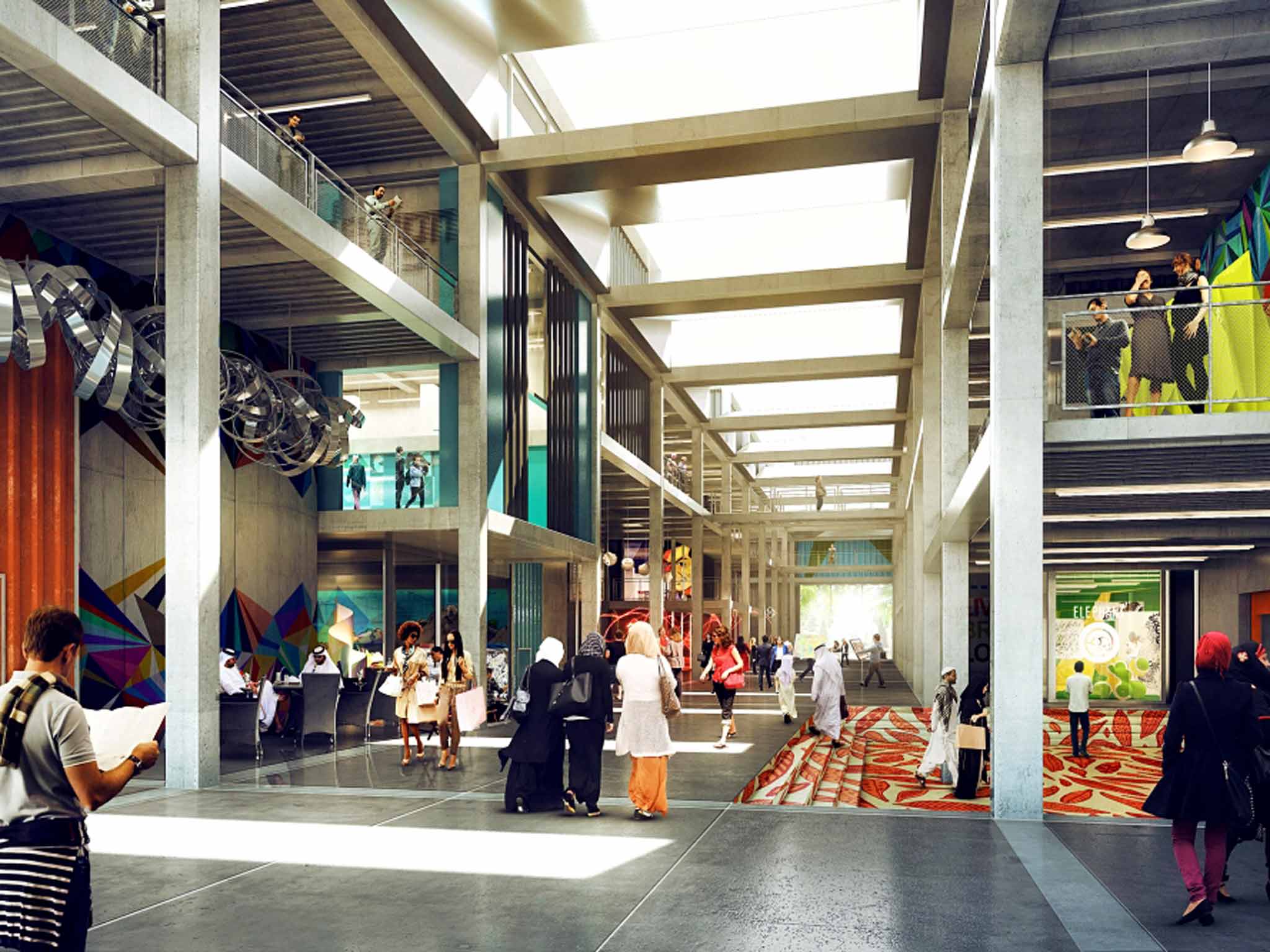Can Dubai's Design District 'hipster village' attract the right type of goatee-wearing individualist?
Dubai's new creative zone is meant to rival New York's Meatpacking District or Shoreditch in east London – but, asks Kate Wills, can you really manufacture a subculture?

A group of graphic designers meet outside their studios for flat whites. Two teenagers pose for a selfie in front of some street art. A couple stroll through a gallery, before tucking into a dirty burger from a food truck. This could be any hipster neighbourhood, anywhere in the world, from Shoreditch to Brooklyn. But instead of fixed-gear bikes parked outside, you're more likely to find Maseratis, and people are probably sipping mocktails in their jam jars. This is the Dubai Design District, or d3, a "hipster village" that is being created from scratch in Dubai.
It sounds like the final death nail in the artistically distressed hipster coffin. An attempt to manufacture cool by erecting some flatpack graffitied warehouses in the middle of the desert. Designed by Norman Foster's firm, Foster + Partners, and built on a patch of dusty wasteland not far from the Burj Khalifa, the so-called "d3" is being billed as a "creative ecosystem for artists, designers and thinkers". Designed to mimic the street patterns of Shoreditch and New York's Meatpacking District, it will combine office space, shops and boutiques with galleries, workshops and artists' studios. The first phase opened last month and the project is due to be completed in 2017.
Although the mall-and-sprawl of Dubai may not seem suited to those who favour craft beer pop-ups, in many ways it's the epicentre of latter-day hipsterism, what Will Self has called "the commodification of the counterculture". This is a city built from nothing in just 40 years, where you can ski in a shopping centre, eat dinner underwater or create your own weather system on the beach. Everything is manufactured here, meaning even the more outlandish hipster gimmicks, such as Brick Lane's Cereal Killer Café (where 100 different kinds of breakfast cereal are on the menu), would fit right in at a Dubai mall. And with its strict alcohol laws, UAE might be the one of the few places where there's actually a reason for a secret speakeasy which can only be accessed by a hidden payphone. So if they build it, will the hipsters come?
"Dubai already has some hipster areas," says Devinder Bains, editor of Stylist Arabia. She moved to Dubai from London eight months ago, and went to the launch of d3 a few weeks ago. "There's a lot of excitement about d3, it's in a similar vein to the BoxPark of shops and restaurants in shipping containers which opened recently, and also the Al Quoz area with its industrial warehouses, galleries and independent cafes. It's not exactly east London, but it's a good start. Dubai isn't the kind of place that has an emerging underground music or fashion scene – there are no real record shops or vintage stalls, so the focus seems to be on creating subcultures through food and art instead."
Bains isn't surprised that d3 was the brainchild of UAE's Prime Minister and the Emir of Dubai, Sheikh Mohammed bin Rashid al-Maktoum. "People think of Dubai as having no culture, so the rulers of the UAE are keen to encourage an arts scene here and change that preconception. The success of fairs such as World Art Dubai prove that the Middle East is a big player in the art world now, and there's a real enthusiasm among locals for cultural events. In November, I went to a street culture festival called Sole DXB at a site that's now part of d3 – although, back then, it took me about an hour in a taxi to find it"
And while the idea of ring-fencing all the "creative types" in town might seem like the stuff of Nathan Barley sitcom nightmares, in Dubai it's common for industries to be corralled into areas; there's "Internet City", "Sport City", and a "Culture Village" (which mainly comprises a massive five-star hotel and a multiplex cinema). So in that context, a specific zone for hipsters makes a lot more sense. And if d3 fosters an artistic community in a cultural vacuum, surely that's a good thing? Dr Gretchen Larsen, lecturer in marketing at the University of Durham, thinks not.
"There's more to building creative communities than just providing the space," says Dr Larsen. "You need networks of people, affordable rents, policies that allow creatives the time to work on their art. If there's not already a pre-existing, organic culture in an area, then I think it will be difficult to attract genuine creativity. You can't just whack a label on something and make it cool."
But when has Dubai ever cared about cool? "The myth of the hipster has been adopted by business now, which makes the term unattractive and inauthentic to most people, certainly in Europe and America," agrees Dr Larsen. "Although, perhaps in Dubai, the term doesn't have those connotations yet."
Like the hipster, d3 might be the ultimate commodification of individuality, the idea that you can buy "uniqueness" off the peg in American Apparel. But at least there'll be no one claiming that it used to be cool around here before the hipsters ruined it. Except perhaps the odd sandfly.
Subscribe to Independent Premium to bookmark this article
Want to bookmark your favourite articles and stories to read or reference later? Start your Independent Premium subscription today.

Join our commenting forum
Join thought-provoking conversations, follow other Independent readers and see their replies